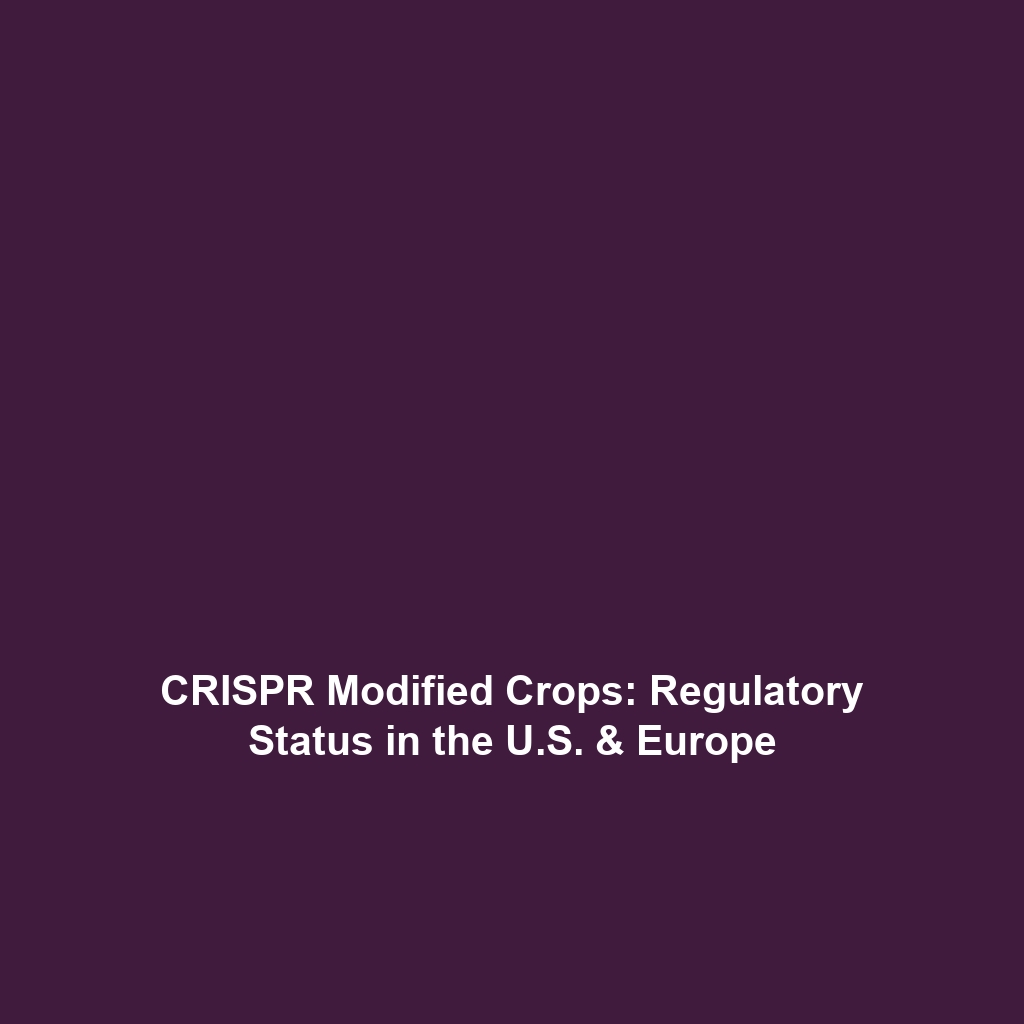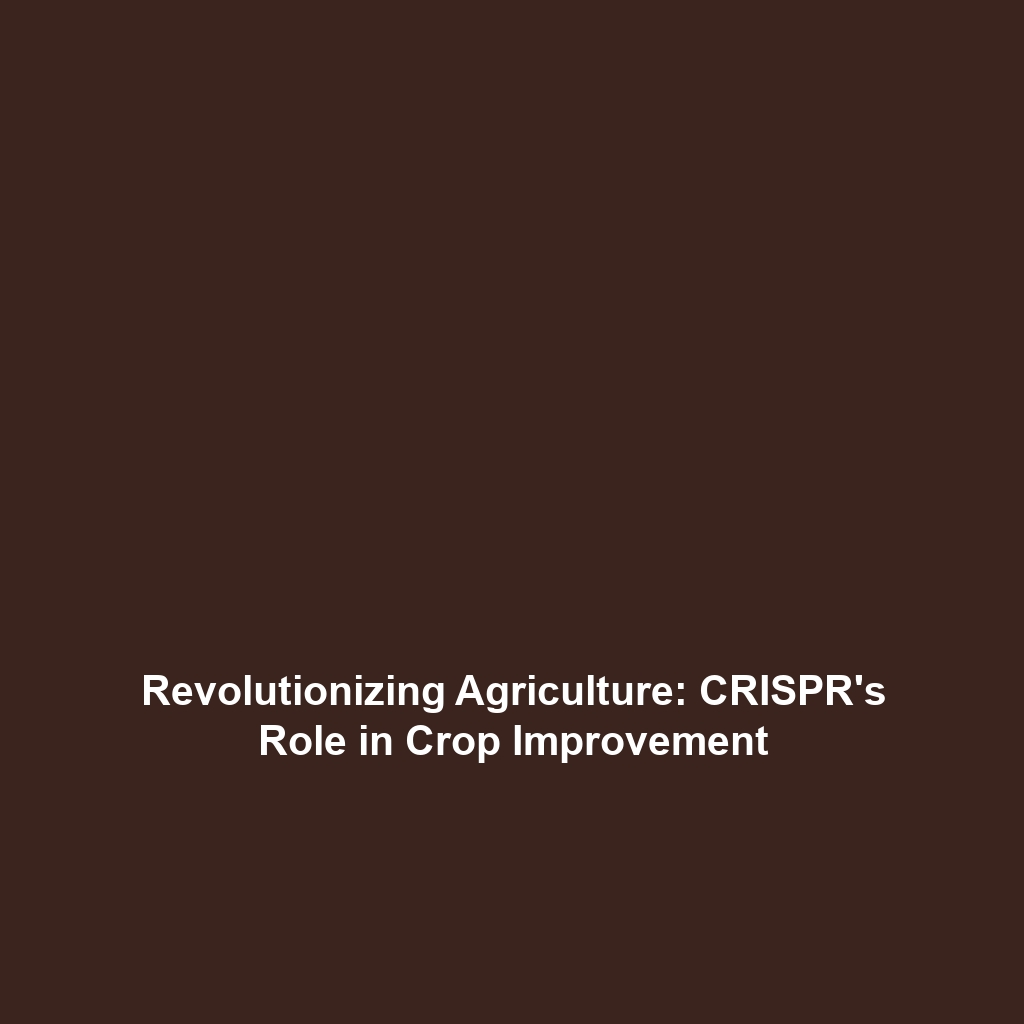Regulatory Status of CRISPR-Modified Crops in Different Regions
Introduction
The regulation of CRISPR-modified crops is a critical component of modern agriculture and biotechnology, influencing not only food security but also environmental sustainability. As CRISPR gene editing technology advances, its applications in agriculture have garnered significant attention. Understanding the regulatory status of these crops in regions like the U.S. and Europe is essential for stakeholders, including scientists, policymakers, and consumers. Proper regulatory frameworks can foster innovation while ensuring safety and ethical standards are met. This article will delve into the regulatory landscape of CRISPR-modified crops across different regions, highlighting its significance within the broader context of CRISPR gene editing.
Key Concepts
CRISPR gene editing allows for precise modifications in plant genomes, leading to enhanced traits such as pest resistance and improved nutritional content. The regulatory status of CRISPR-modified crops varies significantly across regions, primarily due to differing public perceptions, agricultural practices, and regulatory frameworks.
- U.S. Regulatory Framework: The U.S. Department of Agriculture (USDA) employs a case-by-case analysis, emphasizing the nature of the changes made to the crop.
- European Union Regulations: The EU maintains stricter regulations, classifying CRISPR-modified organisms as genetically modified organisms (GMOs), thereby subjecting them to rigorous approval processes.
- Global Perspectives: Other countries like Brazil and Canada are formulating their own regulatory guidelines, which reflect a mix of leniency and precaution.
Applications and Real-World Uses
Understanding how CRISPR-modified crops are used in gene editing opens a discussion about their revolutionary applications. Here are notable examples:
- Enhanced Crop Yields: CRISPR technology has been utilized to improve yields in crops like rice and wheat.
- Pest Resistance: Crops engineered to resist common pests mitigate pesticide use, showcasing greater sustainability.
- Nutritional Improvement: Biofortification of staple crops through CRISPR enhances their nutritional profiles, combating malnutrition.
Current Challenges
Challenges of regulating CRISPR-modified crops include:
- Public Perception: Concerns over safety and environmental impacts can hinder the adoption of CRISPR technology.
- Legal Ambiguities: Differing regulations across regions create complexities for international trade of CRISPR-modified crops.
- Research Limitations: Funding and support for CRISPR research often vary, impacting innovation in different jurisdictions.
Future Research and Innovations
Ongoing advancements in the regulatory status of CRISPR-modified crops focus on:
- Next-Gen Technologies: Emerging tools like base editing and prime editing are on the horizon, potentially transforming how crops are developed.
- Policy Development: As evidence of the safety and efficacy of CRISPR-modified crops accumulates, expect regulatory frameworks to evolve to accommodate these innovations.
- Global Collaboration: Enhanced cooperation between nations may lead to unified standards, facilitating safe global trade of modified crops.
Conclusion
The regulatory status of CRISPR-modified crops in regions such as the U.S. and Europe is a dynamic subject that holds significant implications for the future of agriculture and CRISPR gene editing. As regulations evolve, collaboration among stakeholders will be paramount to ensure that CRISPR technology can be leveraged for food security and sustainability. For more insights into the impact of gene editing on agriculture, explore our articles on biotechnology and environmental science.


